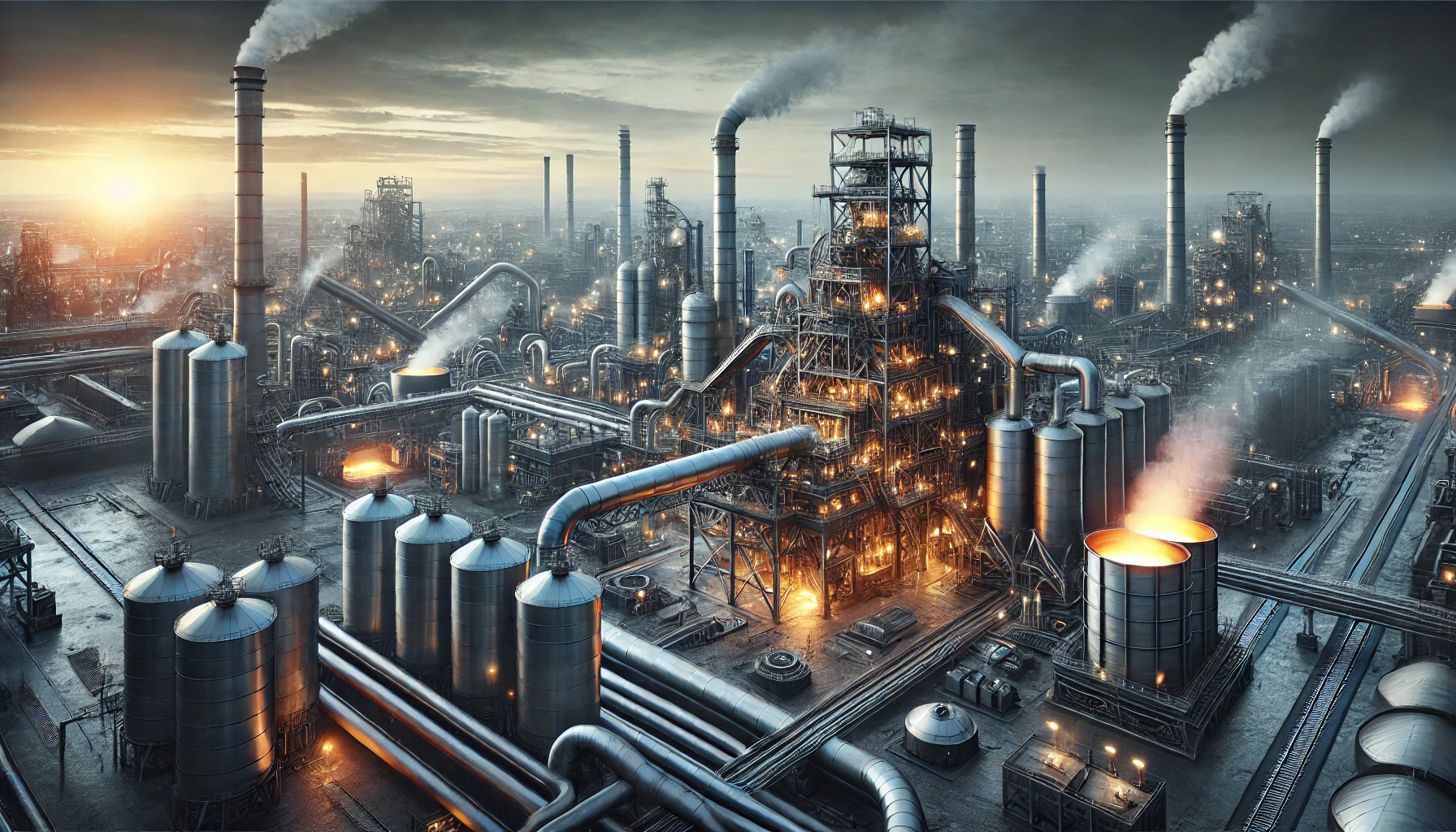
Understanding the Chemistry of Reducing Atmospheres
Reducing atmospheres plays a critical role in metallurgical technology. It impacts various processes and enhances the quality of metal products.
A reducing atmosphere is a gaseous environment devoid of oxygen or other oxidizing agents. It’s characterized by the presence of reducing gases like hydrogen (H₂), carbon monoxide (CO), and methane (CH₄). These gases readily donate electrons, reducing metal oxides to their elemental form.
Key reactions:
Reduction of metal oxides:
MO + H₂ → M + H₂O
MO + CO → M + CO₂
Where M represents a metal, and MO represents its oxide.
Importance of Reducing Atmospheres in Metallurgical Technology
1. Oxide Reduction:
Blast Furnace Ironmaking: A reducing atmosphere created by injecting hot air and coke reduces iron oxide (Fe₂O₃) to molten iron.
Copper Smelting: In a reducing environment, copper oxide ores are reduced to metallic copper by heating the ore with carbon.
2. Quality Improvement:
Steelmaking: In electric arc furnaces and basic oxygen furnaces, a reducing atmosphere minimizes the formation of oxides, resulting in cleaner steel with improved mechanical properties.
3. Control of Carbon Content:
Cast Iron Production: The carbon content in cast iron can be controlled by adjusting the reducing atmosphere in the furnace, where a more reducing environment can increase carbon absorption.
4. Preventing Oxidation:
Heat Treatment: During processes like annealing and tempering, a reducing atmosphere prevents metal surface oxidation, preserving its integrity and desired properties.
5. Enhancing Reactions
Metal Reduction: In reducing metal ores, such as zinc oxide, a reducing atmosphere created by carbon monoxide or hydrogen facilitates the reduction process.
6. Hydrometallurgy
Gold Leaching: In cyanide leaching, a reducing agent like sodium helps maintain gold in solution, enhancing the extraction process.
7. Powder Metallurgy
Sintering: A reducing atmosphere during sintering prevents oxidation of metal powders, ensuring good bonding and densification.
9. Thermal Treatments
Annealing: Steel annealed in a reducing atmosphere helps soften the metal and relieve internal stresses without oxidation.
9. Alloy Formation
Titanium Alloys: The production of titanium alloys often occurs in a reducing atmosphere to prevent oxidation of titanium and its alloying elements.
10. Recycling
Aluminum Recycling: Aluminum scrap is melted in a reducing atmosphere to remove impurities and oxides, enhancing the quality of recycled metal.
11. Additive Manufacturing
Metal 3D Printing: Techniques like selective laser melting (SLM) utilize a reducing atmosphere to prevent oxidation of molten metal powder during the printing process.
13. Ceramics and Composites
Metal-Ceramic Composites: A reducing atmosphere improves bonding between metal and ceramic phases in composite production.
13. Gas Composition Control
Carburizing: Carburizing involves heating steel in a carbon-rich atmosphere to increase surface hardness, carefully controlling the atmosphere to achieve the desired carbon content.
14. Environmental Impact:
Reducing Greenhouse Gas Emissions: Utilizing reducing atmospheres can lead to lower greenhouse gas emissions by reducing reliance on fossil fuels.
15. Enhanced Kinetics
Faster Reaction Rates: Reducing atmospheres can accelerate certain metallurgical reactions, leading to shorter processing times and energy savings.
Technical Considerations and Challenges
1. Gas Composition Control: Precise control of the gas composition, flow rates, and temperature is crucial.
2. Gas Purity: High-purity gases are often required to avoid process contamination.
3. Leakage Prevention: The system must be designed to minimize leaks, as even small amounts of air can compromise the reducing atmosphere.
4. Energy Efficiency: Optimizing the gas flow rates and temperature profiles can reduce energy consumption.
5. Environmental Impact: The choice of reducing gases and their disposal should consider environmental regulations.
Conclusion
Reducing atmospheres is integral to various metallurgical processes, enhancing efficiency, quality, and sustainability. They facilitate oxide reduction, improve mechanical properties, and play a vital role in producing and treating metals. Understanding and controlling these atmospheres is essential for advancing metallurgical practices and achieving optimal metal production and treatment results. By understanding the technical nuances and future trends, we can harness the power of reducing atmospheres to drive innovation in various industries, from metallurgy to electronics.
For more information about ‘Precons’,
♥ Do call 9840930370 or Fill out our Appointment form to get in touch!
♥ Follow our Social Media pages for recent updates. Facebook | Instagram